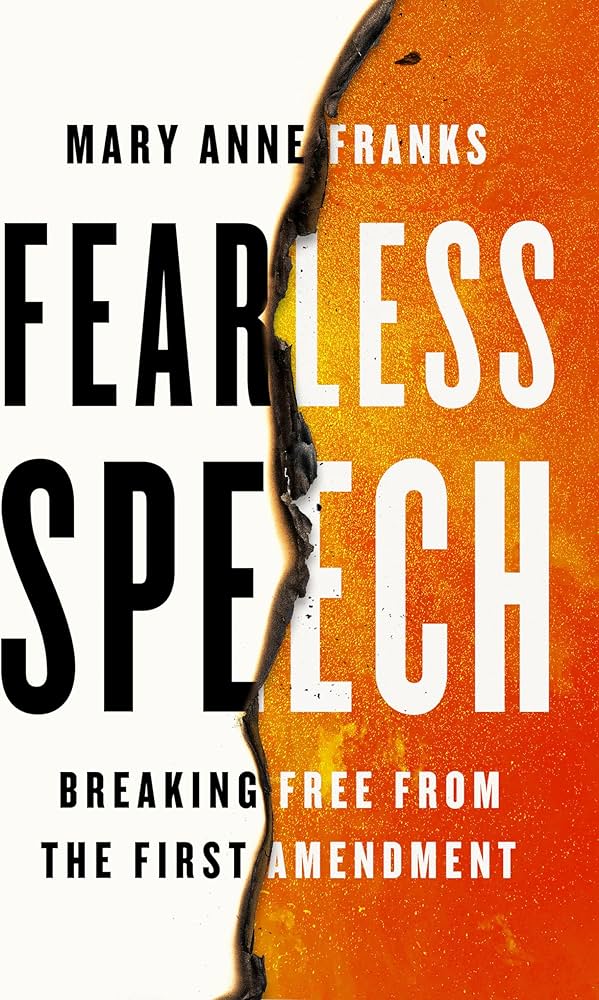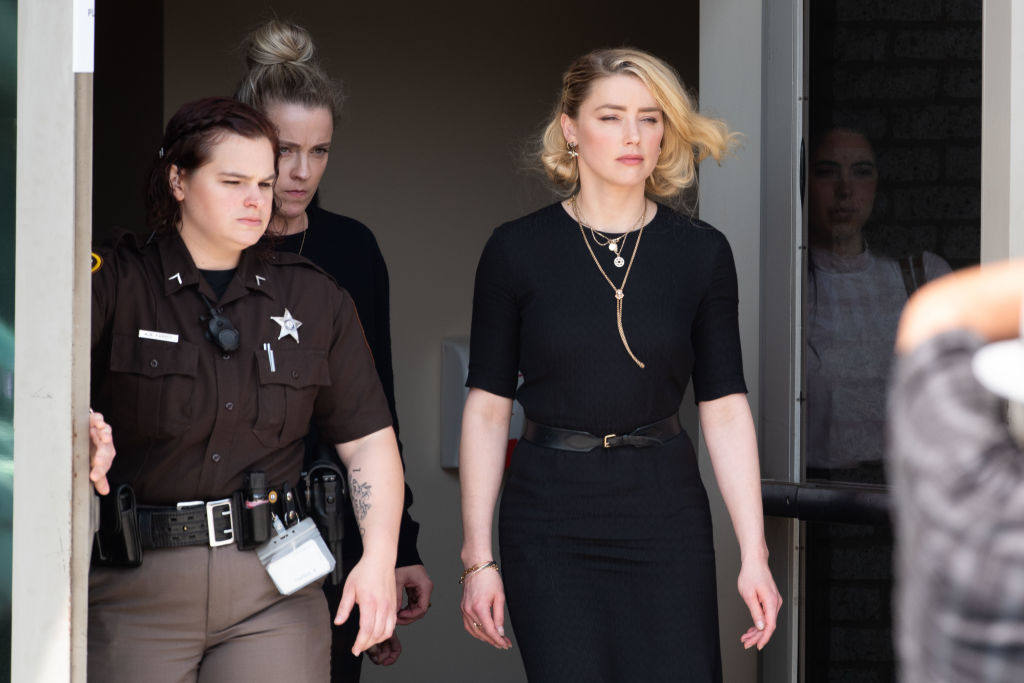When it comes to women’s speech, the protection of the First Amendment is little more than hollow rhetoric.
The following is an excerpt from Chapter 2, “Burning Women” of Mary Anne Franks’ Fearless Speech: Breaking Free From the First Amendment.

“Fear of serious injury cannot alone justify suppression of free speech and assembly. Men feared witches and burnt women. It is the function of speech to free men from the bondage of irrational fears.”
These lines from [Justice Louis] Brandeis’ concurring opinion in Whitney v. California (1927) are among the most famous and eloquent in First Amendment history. They are also notable as a rare acknowledgment by the Supreme Court of the long and violent suppression of women’s speech by men.
According to historian Amanda Foreman, “the silencing of women is as old as civilization itself. … The first laws to have come down to us included a speech code for women.” The Sumerian law codes, which date back 4,000 years, command that “a woman who speaks out of turn to a man will have her teeth smashed by a burnt brick.”
Historian Mary Beard writes in Women & Power: A Manifesto, “When it comes to silencing women, Western culture has had thousands of years of practice.”
William Blackstone’s Commentaries on the Laws of England note the offense of being a “common scold” (communis rixatrix), punishable by being “placed in a certain engine of correction called the trebucket, castigatory, or cucking stool … when she is so placed therein, she shall be plunged in the water for her punishment.”
And then, of course, there were the witch hunts. Author Stacy Schiff explains, “As is often the case with questions of women and power, elucidations here verged on the paranormal. Though weak willed, women could emerge as dangerously, insatiably commanding.”
Women were considered so dangerous, in fact, that they could be hanged for offenses such as “having more wit than their neighbors.”
The events that led to the Salem witch trials in 1692 began with an investigation of schoolgirls who had interrupted a sermon with screams and contortions. Though women had few rights compared to men and lived highly constrained lives, their words were believed to be so powerful that they made milk spoil, crops fail, children corrupt, and men impotent. By the time the trials concluded, 20 people had been executed, several people had died in jail, and nearly 200 people had been accused of practicing “the Devil’s magic.”
But the witch hunts never really ended. In December 2018, actress and activist Amber Heard published an op-ed in the Washington Post titled “I Spoke Up Against Sexual Violence—and Faced Our Culture’s Wrath. That Has to Change.” The editorial detailed the harassment Heard had received in the wake of speaking up about domestic abuse. While the op-ed did not name any perpetrators or specific events, it was widely assumed that Heard was referring to the verbal and physical abuse allegations she made about her then-husband, actor Johnny Depp, during their highly publicized divorce in 2016.

Depp denied the allegations and sued a U.K. tabloid, the Sun, in June 2018, for referring to him as a “wife-beater.” After hearing testimony from both Heard and Depp, the U.K. court ruled in favor of the Sun, finding that its characterization of Depp was “substantially true.”
Heard’s op-ed, published two years after her divorce from Depp, mostly focused on the progress of the #MeToo movement and the need for stronger legal protections for women and girls who have experienced abuse. It also included Heard’s claim that “two years ago, I became a public figure representing domestic abuse, and I felt the full force of our culture’s wrath for women who speak out.” The op-ed recounts the negative career consequences and threats to her safety she endured as a result: “I had the rare vantage point of seeing, in real time, how institutions protect men accused of abuse.”
In February 2019, Depp sued Heard over this op-ed for $50 million, claiming that Heard’s allegations of abuse were a defamatory “hoax” and that Heard was actually the abusive party in their relationship. The trial garnered intense, around-the-clock public scrutiny, greatly facilitated by the presiding judge’s decision to allow the proceedings to be televised live over Heard’s objection. Among the evidence brought to light by the trial were text messages from 2013 that Depp sent to actor Paul Bettany stating “Lets burn Amber!!!,” “Let’s drown her before we burn her!!!,” and “I will fuck her … burnt corpse afterwards to make sure she is dead.”
And burn her they did. Depp had vowed to a different friend in 2016 that Heard was “begging for global humiliation. … She is going to get it,” and the two-month trial delivered on this promise. Heard was forced to describe, on the witness stand and in front of the world, graphic details of sexual assault and physical abuse—details that were then widely mocked by social media influencers, celebrities and even corporate brands. Heard was called a liar, a drug addict, a whore and a monster. She was professionally blacklisted, constantly surveilled by the press and the public, and subjected to death threats and harassment.
All of this happened because Heard wrote something that people did not like—the kind of speech that, according to American free speech orthodoxy, should be most robustly protected by the First Amendment. But in a decision that chilled the speech of sexual abuse and domestic violence victims everywhere, Heard was found liable for defamation and ordered to pay Depp $15 million.
Soon after beginning the process to appeal the decision, Heard announced that she had made the “very difficult decision to settle” the case. In a statement posted to social media, she explained,
“I defended my truth and in doing so my life as I knew it was destroyed. The vilification I have faced on social media is an amplified version of the ways in which women are re-victimized when they come forward. … For too many years I have been caged in an arduous and expensive legal process, which has shown itself unable to protect me and my right to free speech. I cannot afford to risk an impossible bill—one that is not just financial but also psychological, physical and emotional ….”
“Men feared witches and burnt women”—and they are still doing it.
As the Heard case revealed in excruciating detail, when it comes to women’s speech, the protection of the First Amendment is little more than hollow rhetoric.
At Ms. magazine, our mission is to deliver facts about the feminist movement (and those who stand in its way) and foster informed discussions—not to tell you who to vote for or what to think. We believe in empowering our readers to form their own opinions based on reliable reporting. To continue providing you with independent feminist journalism, we rely on the generous support of our readers. Please consider making a tax-deductible donation today if you value the work we do and want to see it continue. Thank you for supporting women’s voices and rights.



